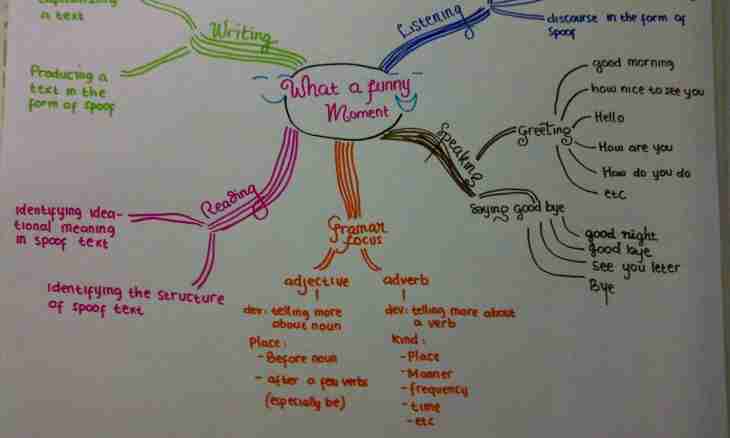Verbal adverb phrase – syntactic means which gives to the speech expressiveness and simplifies it. In oral speech these designs meet seldom. But it is correct to build offers with verbal adverb phrases, to find them in ready texts and to allocate on the letter and intonatsionno any competent person is obliged.
Instruction
1. If you want to express economically a thought at the instruction on several at the same time made actions, use simple sentences with verbal adverb phrases. Similar syntactic designs are usually applied in book styles of the speech. At communication the people use synonymous options: complex sentences with the additional part having adverbial value of time, an image of action. In works of fiction of an adverbial participle brightly and visibly "finish drawing" actions of characters.
2. Verbal adverb phrases have important feature: on the letter of border of this syntactic design are designated by commas, in oral speech – secretory intonation. Unmistakably to cope with a punctuation task, it is necessary to define turn borders precisely.
3. Find the words concerning action in the offer. At first pay attention to a predicate verb, in it the main action of a subject is concluded. Then address the words indicating additional action – it will be adverbial participles. Or "that having made the questions "what doing?"?" will help to learn this part of speech. For example, in the offer "Having described a big circle, the glider smoothly soared up into height" a verb predicate - "soared up", and - "having described" an adverbial participle.
4. Pay attention to an adverbial participle: it can be used in the offer "alone" or with dependent words to make the design called a verbal adverb phrase. It is important to establish its borders accurately.
5. Attentively analyze subordinative communication of words in a verbal adverb phrase: it is optional that all words which are its part will depend only on an adverbial participle, they can extend each other. Review an example: "Wind grew stronger, wrapping up the city a veil of sea fogs". "Wrapping up" an adverbial participle has dependent words: (what?) "city" and (than?) "veil". Further on a chain the connection is established: "veil" (what?) "fogs" (what?) "sea". All these words represent a verbal adverb phrase.
6. Making syntactic unity, the verbal adverb phrase is one sentence part – a circumstance (usually time or an image of action). Besides the main questions, to it it is possible to ask the questions "when?" or "as?", "how?".
7. Defining verbal adverb phrases in offers, do not forget that set phrases are very close to them in structure ("having assumed airs", "like mad", "reluctantly"). But similar steady combinations have no relation to additional action, are not allocated with commas on the letter. They designate sign of action and can be replaced in other words (usually with adverbs). For example, in the offer "Friends without cease worked" it is possible to make replacement: "Friends worked hard".
8. The special attention is required by offers with several verbal adverb phrases. Accurate definition of their borders will help to apply the punctuation rule correctly. Verbal adverb phrases can present ranks of homogeneous parts in the offer therefore the comma between them is not put in the presence of not repeating unions "and", "or", "or". ("Lovers long sat, having joined hands and silently thinking of future happiness").
9. Not isolated verbal adverb phrases meet. The designs which are not allocated by commas or closely contact contents a predicate, or are a part of an additional part of a complex sentence where the means of communication "which" is the word entering into structure of a turn.
